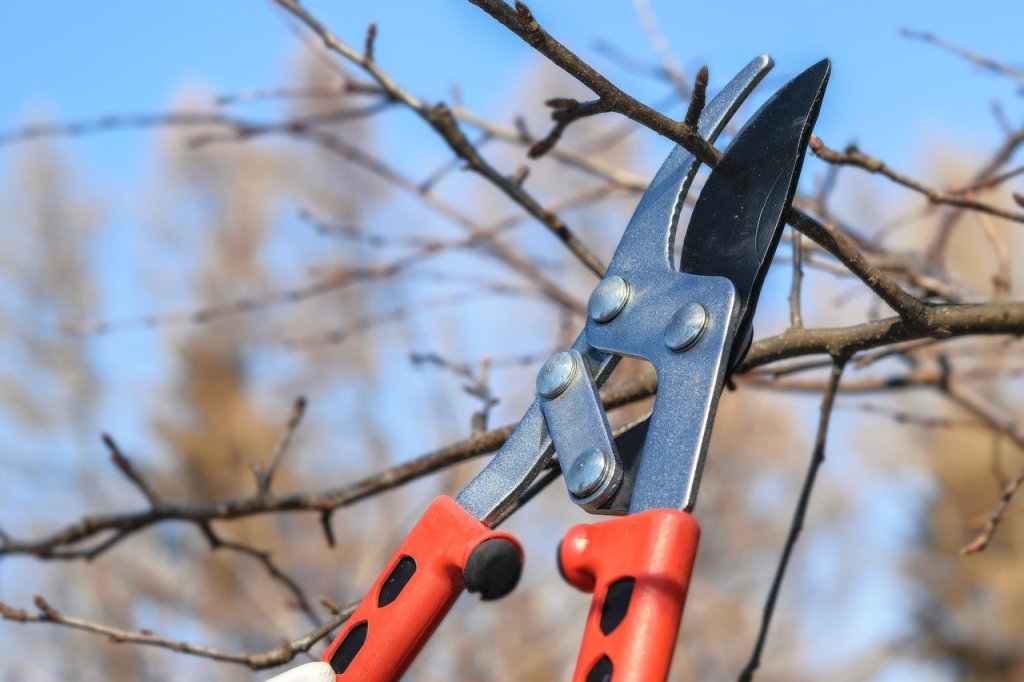
Pruning is a science, but it doesn’t have to be intimidating. There are some pruning guidelines that act as a starting point that make pruning a bit easier. Choosing the correct tools for the job will ensure success and a healthy plant. Lastly, a little knowledge of the plant you are pruning will help in the process and give you wonderful looking plants.
Pruning Guidelines.
The first step to pruning is surveying the plant. This will ensure whether or not pruning is needed. Look for and remove any dead, diseased, damaged, rubbing, or crossing branches first. Remove suckers, little saplings at the base of the tree, and water sprouts, small vertical stems on the main branches. Also look at the plant in terms of safety. Be sure the plant is not blocking vehicle sight lines or covering sidewalks. Remove any low hanging branches that are hanging over a sidewalk.
Pruning Tools.
In order to make cuts that heal correctly on plants, the proper tools are needed. When pruning small branches, those that are 1” in diameter or smaller, hand pruners are recommended. If you have to twist the pruners or take multiple ‘bites’ at the branch, a different tool is needed. For branches that have a diameter greater than 1”, loppers are recommended. Pruning saws are extremely sharp and work well to get into the tight places that the pruners and loppers don’t fit. They can also cut branches that are larger than 1.5” in diameter. The last tool of the trade is the hedge shears. They are used for shearing hedges or shaping plants and shouldn’t be used as substitutes for other pruning equipment.
There are two main pruner types, by-pass and anvil. By-pass pruners work like a pair of scissors, with the sharp blade by-passing the stationary blade. Anvil pruners have a blade that closes down on a flat edge. They have an action that is similar to a knife against a cutting board.
Plant Pruning Tips
Deciduous shade trees, It was previously recommended the best time to prune most shade trees was during winter dormancy. New research shows the optimum time to prune living branches is late spring and early summer because pruning at this time promotes the quickest sealing of pruning wounds, known as CODIT or Compartmentalization of Decay in Trees. Late spring and early summer is when tree cells are most active during the growing season, hence sealing occurs the quickest.
Winter, or anytime during the dormant season, has commonly been the recommended time to prune shade trees. We know trees can be pruned most anytime without killing them, but there are ideal times to prune and times when pruning is best avoided.
We may not have a choice on timing, such as after a wind or ice storm and broken branches need to be removed for safety; but when we have a choice, aim for the ideal time; especially if you are a do-it-yourselfer pruning smaller branches off a smaller tree. Pruning of large branches in large trees should be left to professionals.
Evergreen Trees keep their leaves throughout the winter. Pine trees rarely need to be pruned, if you choose to do so it is best done June into July, or when the new growth is between half and fully grown. If pine trees are pruned too early, the tree could be deformed and pruning too late could cause the tree to be stunted. Be sure to prune only the current years’ growth. If the trees are pruned too far back onto older growth, new growth will be delayed a year. Spruce and fir are two evergreen trees that rarely need pruning. If pruning is needed, they can be pruned between November and April.
Evergreen Shrubs, like arborvitae, Japanese yew, and juniper, are best pruned in late winter between November and April. The cuts will heal quickly and will be covered by new growth.
Deciduous Shrub pruning depends on blooming time. If the shrub blooms in the spring, before June 15th, wait to prune until after it flowers. Lilac, forsythia, and dogwoods are considered spring bloomers. If the shrub is a summer bloomer, like a potentilla, flowering quince, or privet, then late winter to early spring is the best time to prune.
Elizabeth Exstrom is the Horticulture Extension Educator with Nebraska Extension in Hall County. For more information contact Elizabeth at elizabeth.exstrom@unl.edu, her blog at https://huskerhort.com/, or HuskerHort on Facebook and Twitter.

Pingback: JenREES 2/25/24 | JenREESources's Extension Blog